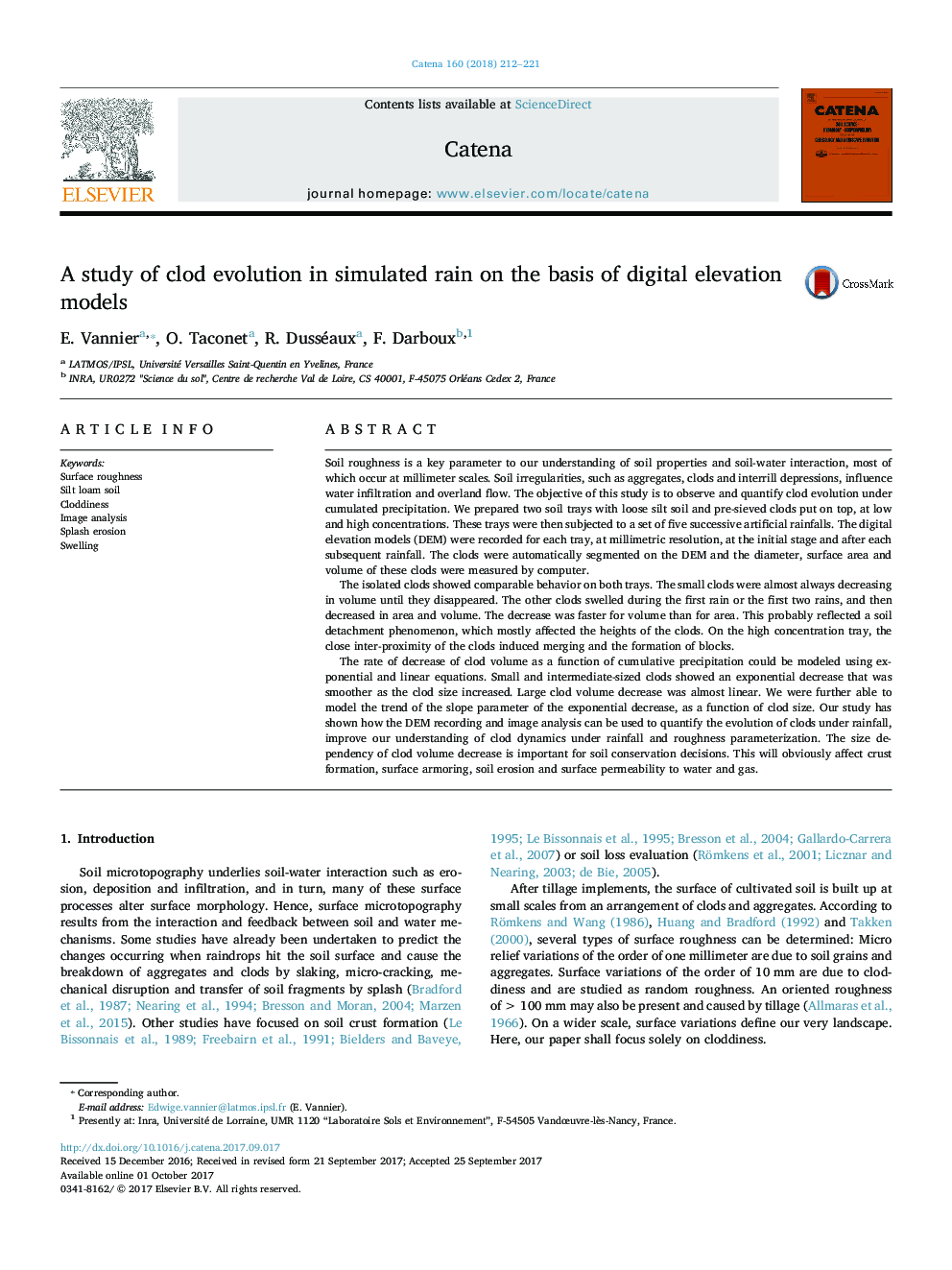| کد مقاله | کد نشریه | سال انتشار | مقاله انگلیسی | نسخه تمام متن |
|---|---|---|---|---|
| 5770041 | 1629194 | 2018 | 10 صفحه PDF | دانلود رایگان |
- Digital elevation models of soil surfaces subjected to rainfalls were recorded.
- Individual clods were automatically segmented and characterized.
- Soil swelling and erosion were monitored.
- Clod volume decrease can be linked to rate of soil detachment.
- Parameters of decrease of clod volume were modeled as a function of clod size.
Soil roughness is a key parameter to our understanding of soil properties and soil-water interaction, most of which occur at millimeter scales. Soil irregularities, such as aggregates, clods and interrill depressions, influence water infiltration and overland flow. The objective of this study is to observe and quantify clod evolution under cumulated precipitation. We prepared two soil trays with loose silt soil and pre-sieved clods put on top, at low and high concentrations. These trays were then subjected to a set of five successive artificial rainfalls. The digital elevation models (DEM) were recorded for each tray, at millimetric resolution, at the initial stage and after each subsequent rainfall. The clods were automatically segmented on the DEM and the diameter, surface area and volume of these clods were measured by computer.The isolated clods showed comparable behavior on both trays. The small clods were almost always decreasing in volume until they disappeared. The other clods swelled during the first rain or the first two rains, and then decreased in area and volume. The decrease was faster for volume than for area. This probably reflected a soil detachment phenomenon, which mostly affected the heights of the clods. On the high concentration tray, the close inter-proximity of the clods induced merging and the formation of blocks.The rate of decrease of clod volume as a function of cumulative precipitation could be modeled using exponential and linear equations. Small and intermediate-sized clods showed an exponential decrease that was smoother as the clod size increased. Large clod volume decrease was almost linear. We were further able to model the trend of the slope parameter of the exponential decrease, as a function of clod size. Our study has shown how the DEM recording and image analysis can be used to quantify the evolution of clods under rainfall, improve our understanding of clod dynamics under rainfall and roughness parameterization. The size dependency of clod volume decrease is important for soil conservation decisions. This will obviously affect crust formation, surface armoring, soil erosion and surface permeability to water and gas.
Journal: CATENA - Volume 160, January 2018, Pages 212-221
